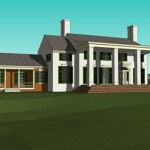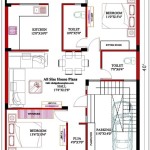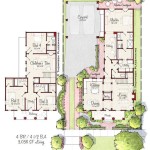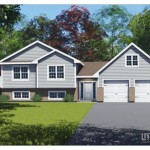House on Haunted Hill Floor Plan: Exploring the Layouts of Terror
The 1959 film "House on Haunted Hill," directed by William Castle, remains a classic of the horror genre. Its chilling atmosphere, driven by both psychological suspense and startling scares, is intrinsically linked to the house itself. While the exterior shots were filmed at the Ennis House, designed by Frank Lloyd Wright, the interior sets, crucial to the film's narrative and frights, were purpose-built and specifically designed to disorient and unsettle viewers. Understanding the floor plan of this fictional house provides insights into the film's effectiveness and the careful orchestration of its scares.
While no official blueprints of the "House on Haunted Hill" set exist, close examination of the film reveals key features and spatial relationships. The house is presented as a sprawling, multi-level labyrinth, filled with long corridors, hidden passages, and unexpected drops. This complexity serves several purposes. Firstly, it enhances the feeling of isolation and vulnerability experienced by the characters. Lost within the maze-like structure, they become easy prey for both the house's apparent supernatural inhabitants and Frederick Loren, the eccentric millionaire host.
Secondly, the convoluted layout allows for the strategic placement of scares. Blind corners, sudden changes in elevation, and dimly lit areas create an environment ripe for unexpected appearances and jump scares. The infamous skeleton emerging from a closet, for example, relies on the surprise afforded by the house's shadowy, claustrophobic interior.
The central hall appears to be a primary organizing space, with various rooms branching off it. This hall, often seen in long shots, emphasizes the house's size and the characters' smallness within it. It also becomes a recurring visual motif, representing the characters' attempts to navigate the house's dangers and escape its clutches.
The various bedrooms, each occupied by a different guest, are scattered throughout the house, furthering the sense of isolation. This separation prevents the characters from easily forming alliances or offering each other support, making them more susceptible to psychological manipulation and physical threats. Furthermore, the unique layout of each room contributes to the individual scares experienced by the characters. Annabelle's encounter with the hanging body, for example, is confined to her specific room, intensifying the personal nature of the horror.
The basement, a quintessential element of haunted house narratives, plays a particularly significant role in "House on Haunted Hill." Depicted as a dark, damp space with exposed brick walls and low ceilings, it represents the hidden depths of the house and its sinister secrets. The acid pit, the ultimate symbol of the house's deadly nature, is located here, functioning as both a physical threat and a representation of the psychological torment experienced by the characters.
The use of hidden passages and secret doors further complicates the floor plan and adds to the overall atmosphere of mystery and suspense. These architectural features not only facilitate the unexpected appearances of the "ghosts" but also underscore the house's deceptive nature. The walls themselves seem to shift and change, contributing to the characters' disorientation and fear.
The film's climax, which takes place in the basement near the acid pit, effectively utilizes the established floor plan to create a heightened sense of danger. The characters are trapped in a confined space, surrounded by darkness and the threat of the acid, with seemingly no escape. The layout of the basement, with its limited visibility and lack of exits, underscores their desperation and vulnerability.
While the actual floor plan of the "House on Haunted Hill" set remains a matter of speculation and reconstruction based on the film's visuals, its impact on the film's narrative and atmosphere is undeniable. The house itself becomes a character, a menacing presence that contributes significantly to the film's enduring power to frighten and disturb. Its layout, with its confusing corridors, hidden spaces, and strategically placed scares, serves as a blueprint for terror, shaping the characters' experiences and driving the narrative towards its chilling conclusion.
The absence of a definitive floor plan also adds to the mystique of the "House on Haunted Hill." It allows viewers to imagine the unseen spaces and further personalize their experience of the film's horrors. The house becomes a canvas for individual fears and anxieties, a place where the unknown lurks around every corner.
The influence of "House on Haunted Hill" can be seen in countless subsequent horror films that utilize similar architectural tropes to create suspense and fear. The idea of the house as a character, a menacing presence that traps and torments its inhabitants, remains a powerful and enduring theme in the genre, testament to the effectiveness of the original film's design and its lasting impact on the cinematic landscape of horror.

House On Haunted Hill Map By Curtisryan92024 Deviantart

This Is The Blueprint For Hill House From Haunting Of Master Drawn By Olivia Cra On A Blueprints Plans

Hill House Blueprint Combined Master Plan By Desigunkies On Deviantart A Blueprints Plans

Haunting Of Hill House Floor Plan On A Plans Flooring

Floor Plan Of Hill House Shirley Jackson The Ground Ca 1958 Image Via Library On A How To

House Of Representatives Floor Debate Homeinteriorpedia In 2024 On A Hill Plans Ground Plan

The Sims Resource Hill House

The Sims Resource Hill House

The Iconic House On Haunted Hill Mansion Just Hit Market In Disgusting

The Manor From Haunting Of Hill House On Hooked Houses








